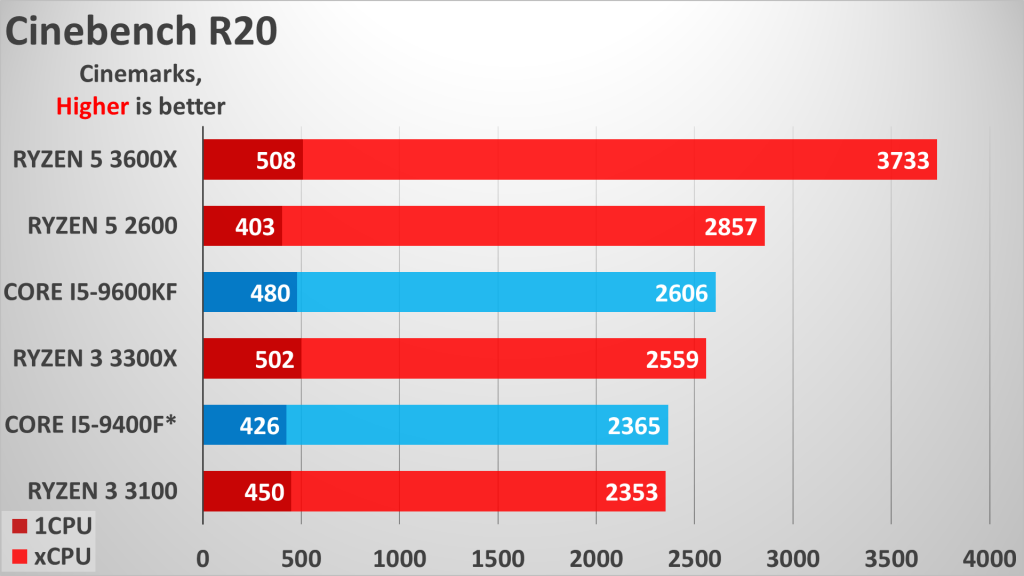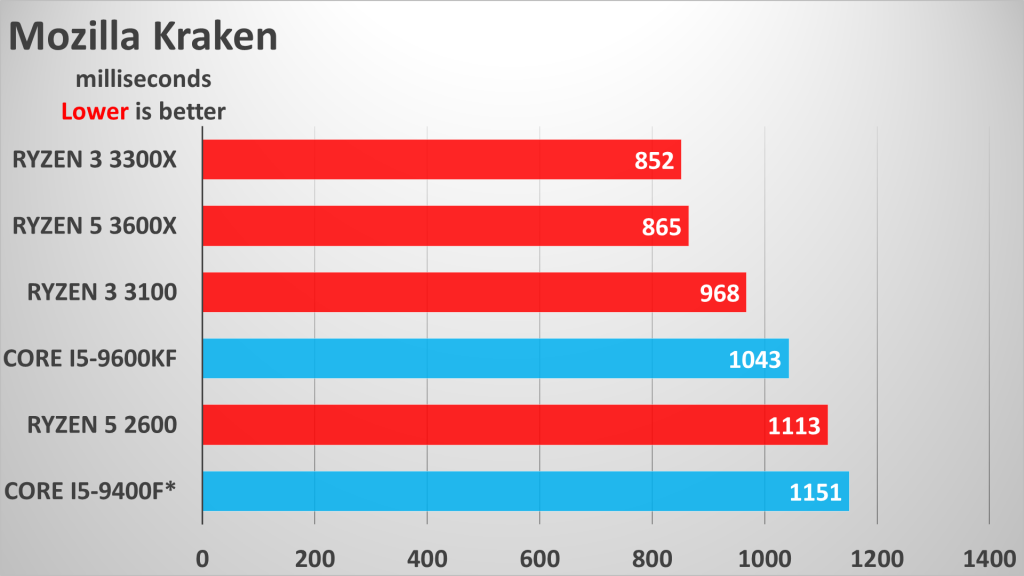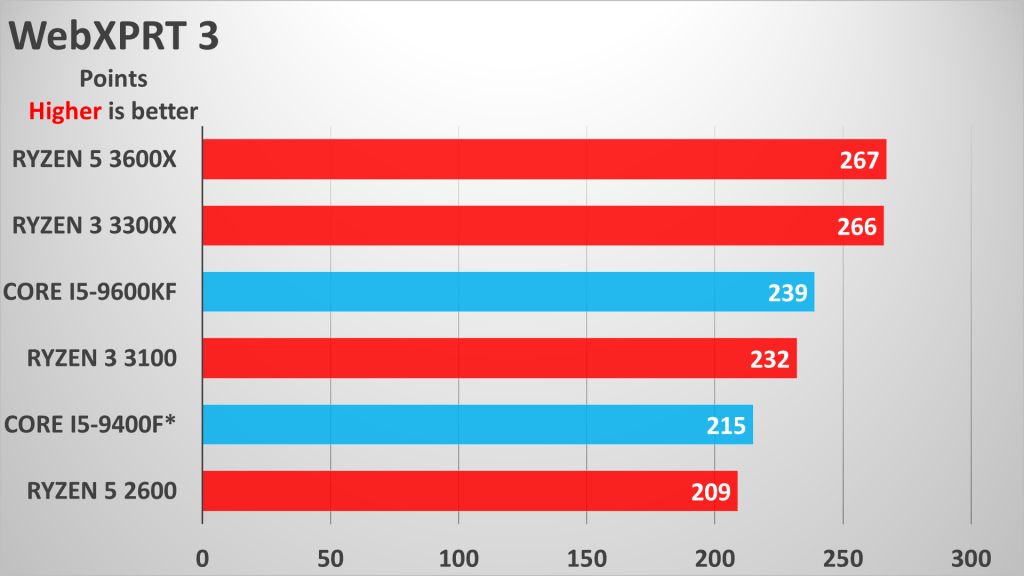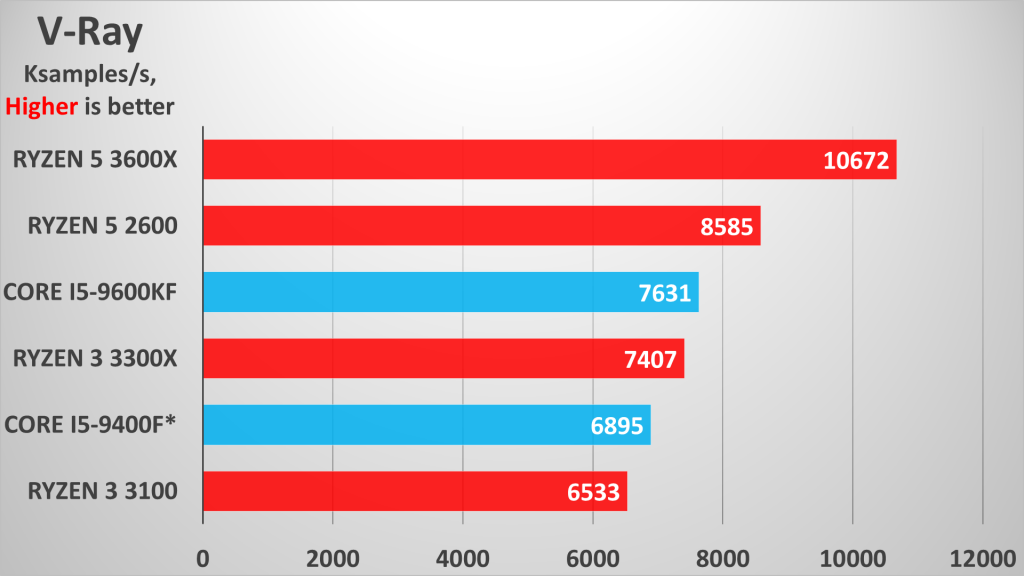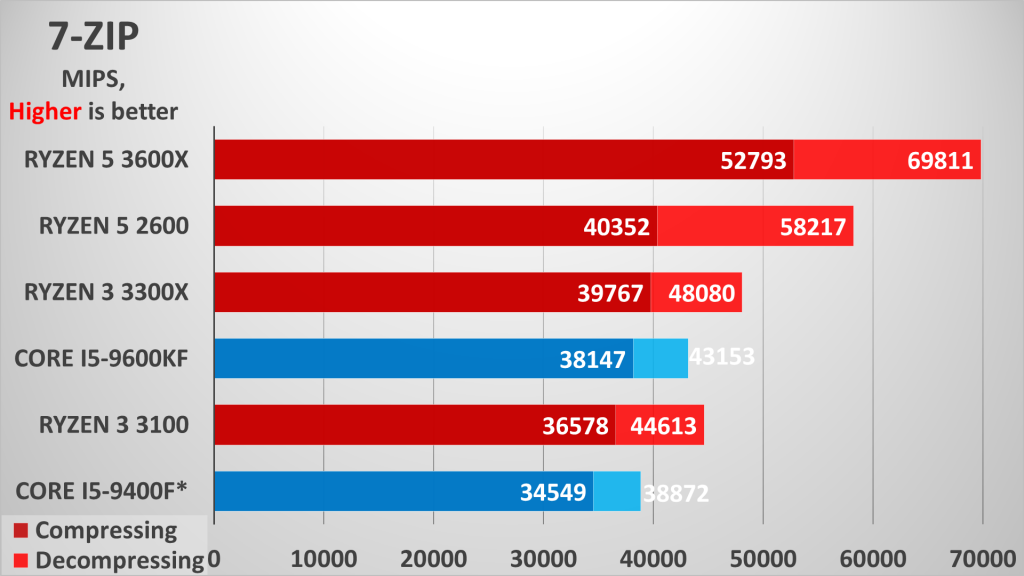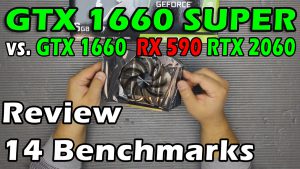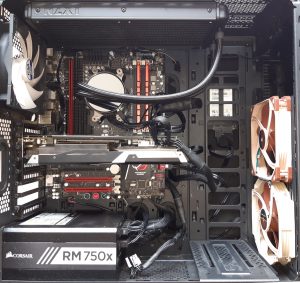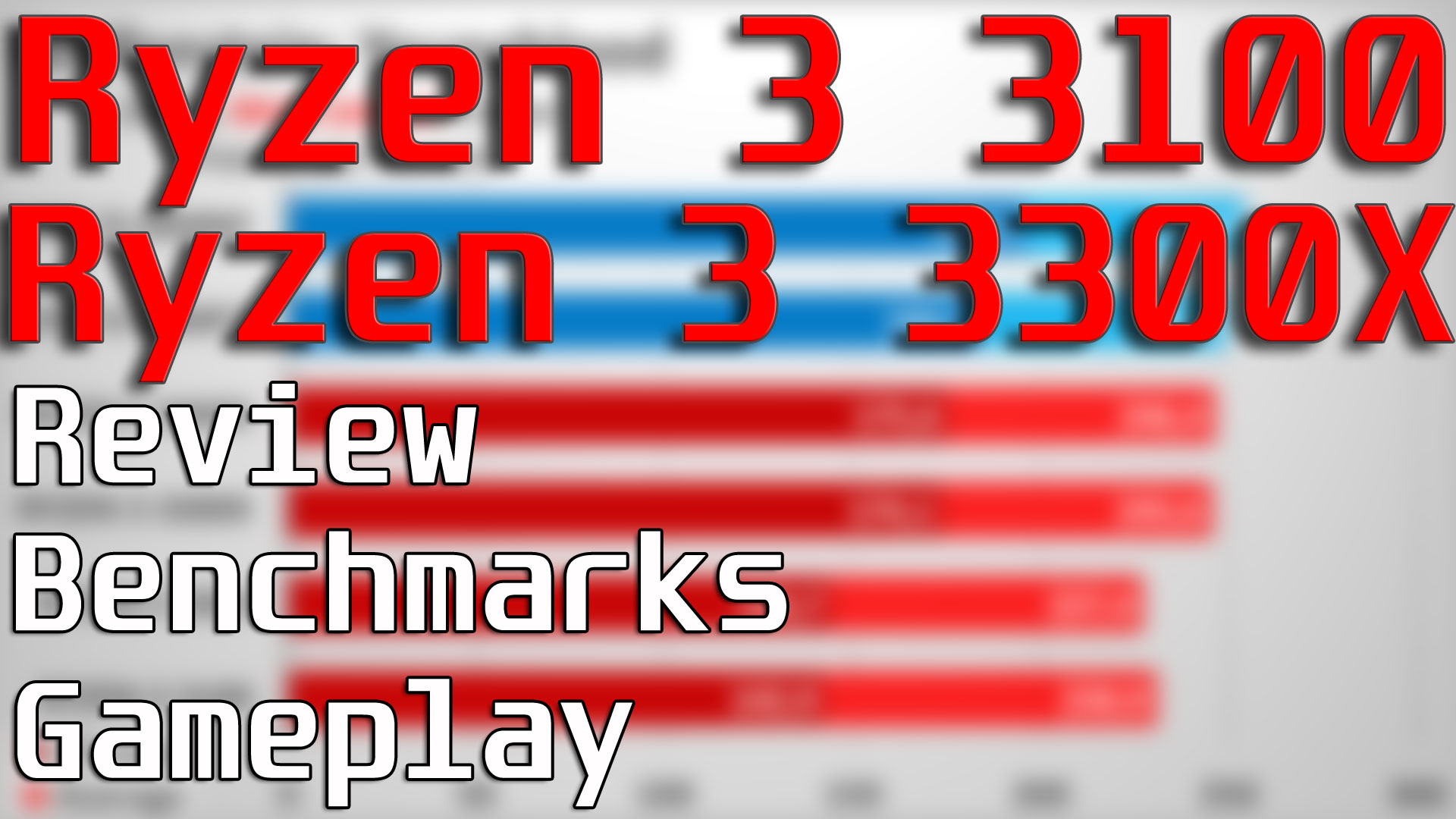
Results in the applications
For comparison with the new models, we added their bigger brother Ryzen 5 3600X, which works at very close frequencies to those of the 3300X and makes an interesting comparison between 6 cores in 2 CCXs and 4 cores in one. To this we added the Ryzen 5 2600, which now occupies the price position at which the Ryzen 3 3300X is expected to come, and is also handy as a “proxy” for the performance of the Ryzen 5 1600AF – subtract about 3-5% of productivity and you’ll have idea what to expect.
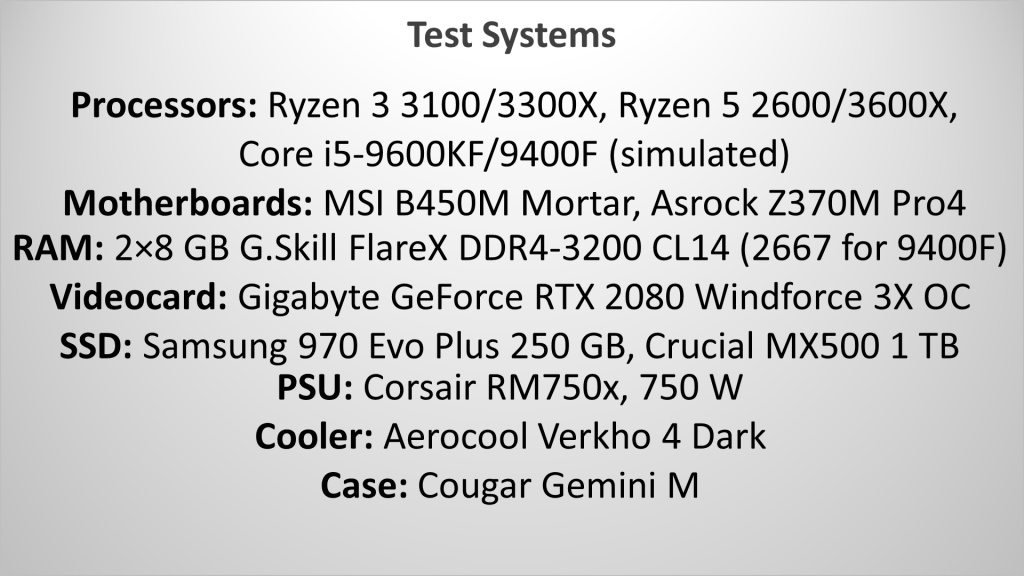
On the part of Intel we had at hand a Core i5-9600KF, which is in the same price range as Ryzen 5 3600X, specificially it is about 2 times more expensive than the Ryzen 3 3300X. Another convenient model would have been Core i5-9400F, which we do not have, but it is easy to simulate from the 9600KF with some BIOS settings changes. Just keep in mind it is not the real CPU, there might be slight differences in performance. All CPU’s except for 9400F used DDR4-3200 CL14 memory with only the simulated one running 2667 CL14, as we tink it is way more likely that processor to be used in conjunction with a B360 or H310 motherboard, which doesn’t allow higher memory speeds.
Application wise, the Zen 2 IPC advantage, in addition to the relatively high 3300X frequency, puts at the top of the charts when considering single-threaded performance. Which is quite surprising, as we were used to Intel models occupying that spot. Things are changing though. Having 4 cores with active SMT technology also helps a lot for multi-threaded performance, with the new Ryzen 3 3300X generally running on par or even slightly faster than the 2 times more expensive Core i5-9600KF, with the sole exception of Handbreak video transcoding, where intel model takes more notable lead. The suprising result of this is that overall the new Ryzen 3 3300X is faster both in single threaded as well as I multithreaded performance than the Core i5. The situation between Ryzen 3 3100 and the simulated Core i5-9400F is pretty much the same.
Looking at the comparison with the Ryzen 5 2600, the situation is particularly interesting, as the Ryzen 3300X lags around 10-15% in rendering, 7-zip data extraction and X264 video encoding, but offsets it with better performance in X265 encoding, data compression in a 7-zip, and with its simply brutal result in WinRAR manages to come on top even in overall multi-threaded applications score, not to mention obviously better single threaded results. The situation with 3100 is substantially less clear though, as it is losing with quite big margins in multithreading against the Ryzen 5 2600, while maintaining some Single thread lead.
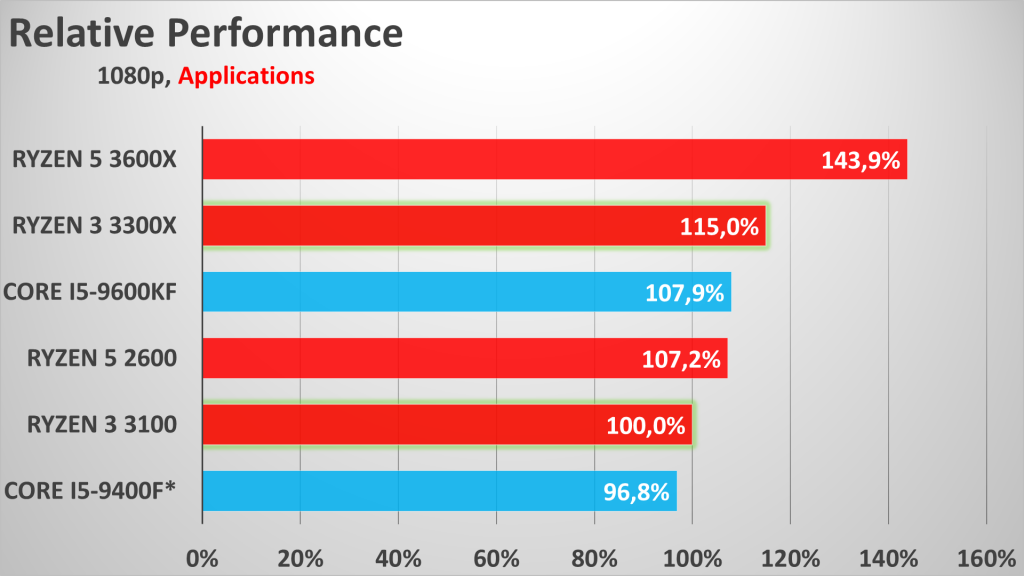
Above all however, remains Ryzen 5 3600X, which is not particularly unexpected, with its slightly higher turbo speed against 3300X allowing it to remain just in front of it in single threaded performance, while 50% more cores lead to about 40% higher multi-threaded performance.

